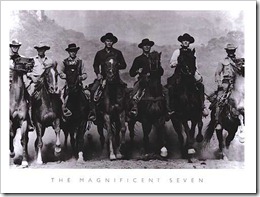I have been offered a lot for my work, but never everything. Chris Adams – Yul Brynner (The Magnificent Seven).
 I have spent a fair amount of time reflecting on course design and why the gradebook is somewhat of a late bloomer, in terms of Moodle core features and its use by moodlers (if at all). I don’t mean to harp on about how great a moodle gradebook can be, but if you agree and you do think there is something in ‘gradebook inspired Moodle course design’ then here seven course design tips for you to consider.
I have spent a fair amount of time reflecting on course design and why the gradebook is somewhat of a late bloomer, in terms of Moodle core features and its use by moodlers (if at all). I don’t mean to harp on about how great a moodle gradebook can be, but if you agree and you do think there is something in ‘gradebook inspired Moodle course design’ then here seven course design tips for you to consider.
Effective Course Design Using the Gradebook
- Start with the end in mind. Consider what change you will have impacted upon your students by the end of the course and perhaps even more importantly, how will you know? Think about a completed course, what will it look like? Sketch it out on paper or using a mapping tool highlighting the key outcomes or assessments opportunities.
- With the course blueprint in mind, build a framework in the gradebook using grade categories knowing you will now be able to allocate the assessed activities and assignments to the appropriate grade category.
- Don’t be put off by the gradebook, simply leave all the setting as ‘default.’ If you are confused by the ‘aggregation options’ simply set it to ‘sum of grades.’ Apply an easy marking scheme, eg assignments 0/20, learning tasks 0/10 awarding marks available as a reflection of time invested. 30 minutes 0/30 and hours task 0/60. (Not forgetting you can always export the gradebook to a spreadsheet at a later date, not that this is aim.)
- Keep the building blocks of the course design down to a manageable number, otherwise, like the course, the gradebook will become unmanageable. For example four short courses, rather than an academic years worth rammed into one course.
- Keep assignment names short, it keep the gradebook neat. Eg Homework Task – Capital Cities Around the World might be CCAW or Capitals.
- How will learning be measured? What are the assessments opportunities, for both learner engagement and administration. Where and how can Moodle accelerate learning? Make best use of self, peer and automated assessment (quizzes) and the use of dynamic content (RSS), collaboration, chats (quizzes).
- Learn how to create your first outcome and scale. You do not have to use them, so have a go and experiment.
Now, rest assured you efforts will be worthwhile, as the gradeook will manage your submissions, deadlines and return your feedback. Nice.
Effective Course Design
- Schedule ‘air blocks’ into the course. Opportunities to allow learners to catch up, for revision, to retake quizzes, for diversion or even self directed learning.
- Design the learning pathway(s). How will the learn progress through the categories and order the gradebook.
With your gradebook built, your categories ordered, your course frame built, apply the do’s and don’ts of course design, and focus on designing great learning assets and engaging learning pathways.
Course Design Moodle 2.0
Michelle Moore in her ‘Teaching with Moodle – Best practices in Course Design’ offers some valuable advice, and for good measure, here is my two cents worth…
Investigate alternative course formats, HTML block as menus, collapsed courses.
Communicate visually, (create an icon repository), use an icon set as a signpost learner – possibly through a shared in a repository.
Use mouse-overs to communicate with the user or reveal new content.
Schedule ‘air blocks’ into the course. Opportunities to allow learners to catch up, for revision, to retake quizzes, for diversion or even self directed learning.
Make good use of the blocks
Promote communication between students using forum, the comments block and messages. Encourage comments on blog entries.
Bring in live feeds via RSS or use the random glossary entry.
Share feedback via the course completion block or the quiz block.
Prompt action and organisation using the calendar, upcoming events or by showing recent events.
Don’t over egg the conditional formatting tool. Remember we want to encourage self-directed learning.
Look for alternatives to text flow, for example mp3s (Myna), flowcharts, mind maps (ekpenso 1.9) YouTube, (flipped teaching), Voicethreads, Vokis and more.
[qr_code]


